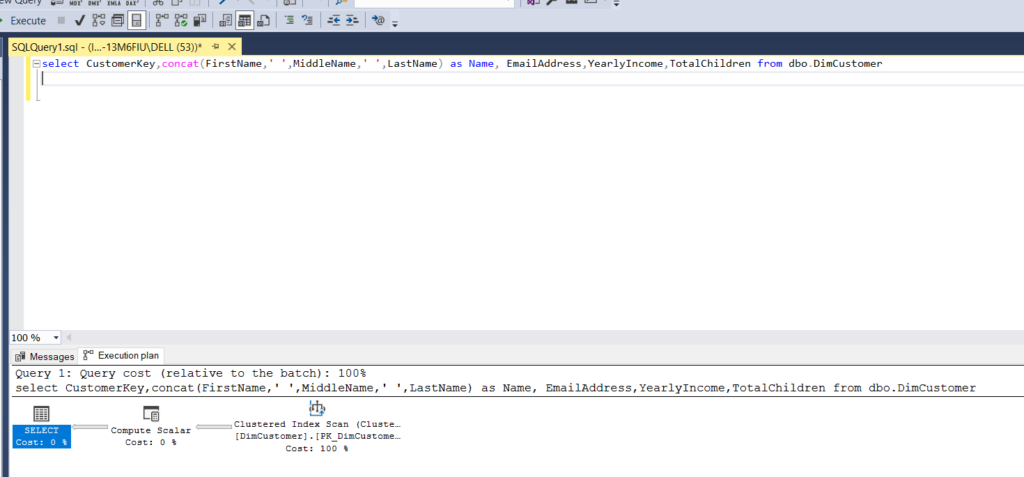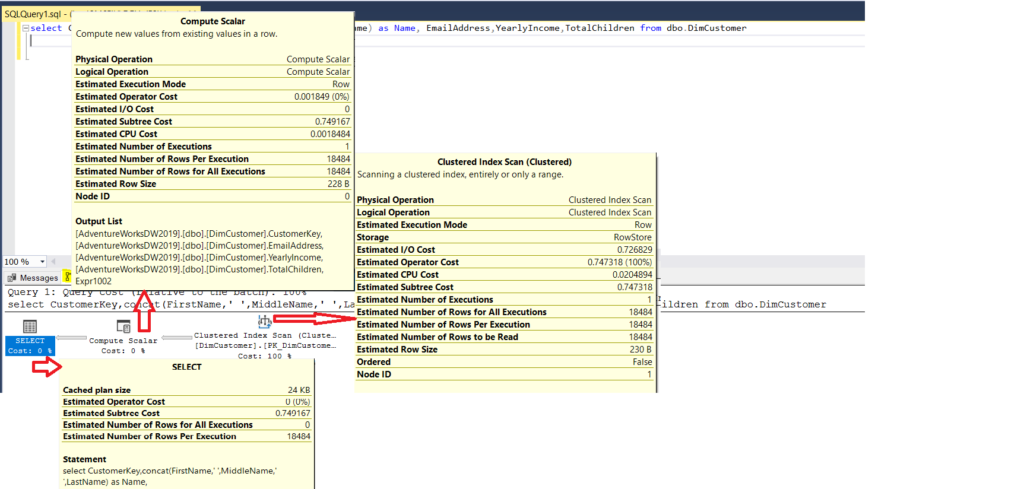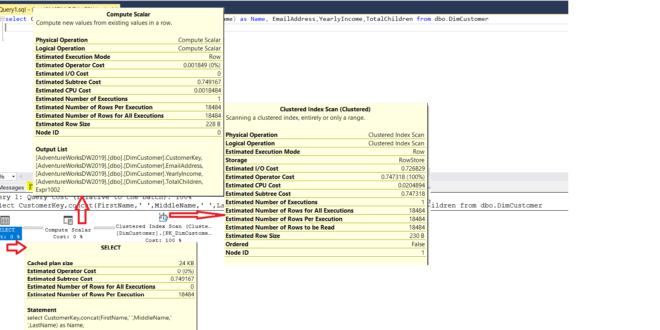In this blog we learn about Execution plan in SSMS. SQL Server Management Studio (SSMS) is an integrated environment that allows database administrators and developers to work with SQL Server. One of the features that make SSMS so useful is the Execution Plan, which provides insight into how SQL Server executes a query.
An Execution Plan is a graphical representation of the steps that SQL Server takes to execute a query. It shows how SQL Server accesses the data, joins tables, sorts data, and applies filters to return the desired result set. The Execution Plan is created by the SQL Server Query Optimizer, which analyzes the query and determines the most efficient way to execute it.
In SSMS, you can view the Execution Plan for a query by clicking on the “Include Actual Execution Plan” button in the query toolbar or by selecting “Include Actual Execution Plan” from the Query menu. When you run the query, the Execution Plan will be displayed in a separate tab.
The Execution Plan is composed of operators that represent the physical or logical operations that SQL Server performs to execute the query. The operators are connected by arrows that show the flow of data between them. Each operator has its own properties that provide additional information about the operation.
The execution plan appears in ssms as shown in below picture

If you hover mouse on Execution plan items, showing some information about the query and it’s execution time.

The Execution Plan can be used to identify performance issues in a query. For example, if the Execution Plan shows that SQL Server is performing a table scan instead of using an index, it may be an indication that the query is not optimized. The Execution Plan can also be used to identify bottlenecks in a query by identifying the operators that take the most time to execute.
There are several types of Execution Plans in SSMS. The Actual Execution Plan shows the plan that SQL Server used to execute the query, including the actual number of rows processed by each operator. The Estimated Execution Plan shows the plan that SQL Server would use to execute the query based on the available statistics, but without actually executing the query. The Live Query Statistics shows a real-time view of the execution of the query, including the progress of each operator and the number of rows processed.
In addition to viewing the Execution Plan in SSMS, you can also save it to a file, copy it to the clipboard, or export it to XML. This allows you to share the Execution Plan with other developers or database administrators.
In conclusion, the Execution Plan in SSMS is a powerful tool that allows developers and database administrators to analyze and optimize SQL Server queries. By providing insight into how SQL Server executes a query, the Execution Plan can help identify performance issues and bottlenecks. With the ability to view, save, and share Execution Plans, developers and database administrators can work together to optimize queries and improve the performance of SQL Server databases.
 IT2EDU Empowering Education Through Technology
IT2EDU Empowering Education Through Technology

